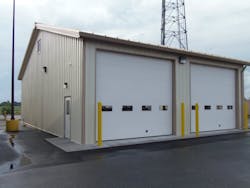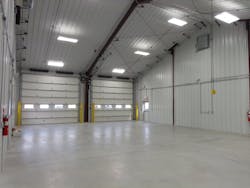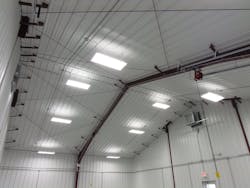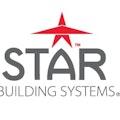A new look at value engineering
The term “value engineering” has become a buzz phrase common throughout the construction industry—but one that is often misinterpreted. The key to really understanding its power is to think about value as either getting the same thing at a lower cost or spending the same but getting more. In this respect, layout can drive how much you get for what you spend. Every material and construction project has an optimum price point based on the scope of work and the parameters that you're constructing it to. Allowing your expert material supplier to direct you as to how to get as close to that optimal price point as possible is value engineering—emphasis on “value.”
It’s All About the Change
Most people, if they had to define value engineering as one word, would likely choose “efficiency.” That, however, would be missing the mark. The basic misconception tied to value engineering is thinking that the term simply means to take a set of parameters, none of which will change, and do the best design based on those static parameters. The truth is, it’s not about just finding the lightest, least expensive way to make something. That is just efficient engineering. It's not value engineering.
Value engineering and basic engineering have one major difference: the flexibility or inflexibility of the parameters. With basic engineering, in a traditional sense, the parameters don’t change. Conversely, in value engineering, it’s all about the change. Value engineering, then, can only be realized by tweaking the scope to find a better value.
Finding Value in Shifting Scope
The point is, value engineering can only provide the best value to the customer if that customer is willing to be flexible on their project parameters. That doesn’t mean shifting the main points of the job. Value engineering, for example, may tweak the paint formulation, the column depth restriction, bay spacing, deflection criteria or bracing locations and type. These are shifts in the scope, not wholesale overhauls, which allow the client to have their needs met, while getting the very best price for what they are walking away with. Examples for a metal building might be, for instance, changing the roof slope or considering dropping interior columns if rafter spans get too large in a given space. You just have to be willing to live with that column where you put it.
That’s the heart of value engineering: adjusting your requirements to still get everything that you wanted but in the most efficient way, before you hand it to your number-crunching engineer and saying, “Now make it the lightest you can within this scope.” Value engineering, when you get down to it, is really about the scope, not about the engineering itself.
There’s a nuance between tweaking the scope versus efficiency within the actual design. In effect, these are two different things and both have to happen in order to realize the best result for your customer. To some extent, value engineering encompasses both the frontend layout (taking into consideration any material limitations) as well as quality, cost-efficient design. Combining those two aspects is how you truly get the most benefit.
To put a fine point on this, whatever your need is, if you are willing to consider a slight scope tweak, then value engineering is for you.
To learn more about how Star Building Systems can help value engineer your next metal building project, contact Customer Service or your District Sales Manager.



